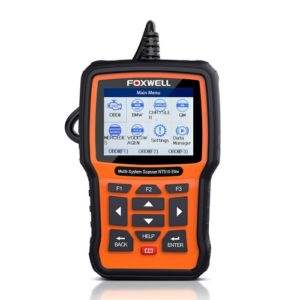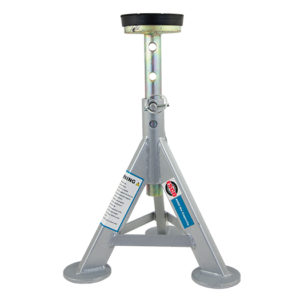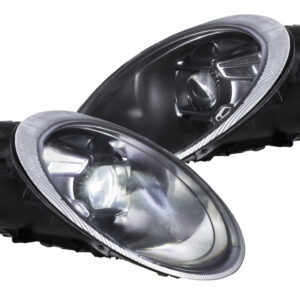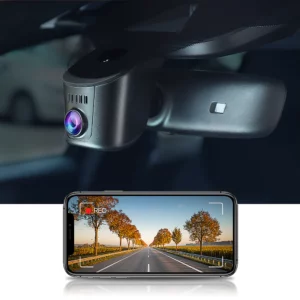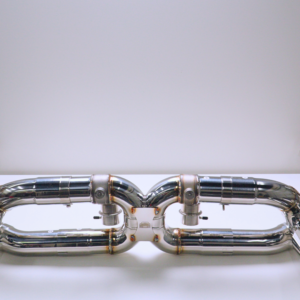Despite being relatively simple, spark plugs play a significant role in any gasoline engine. Their function is to produce a spark at the required time that ignites the air and fuel mixture. All spark plugs, being exposed to extreme pressures and temperatures that occur during engine operation, wear out with time. This can cause poor engine performance, misfire and drop in fuel economy. Also, a worn spark plug can have a larger electrode gap, which requires higher voltage and can lead to premature ignition coil failure.
While replacing spark plugs on normal cars is a pretty simple task, it is pretty difficult on the Porsche 997 Turbo due to the engine’s horizontally opposed design and turbocharger placement. We recommend you have experience working on cars before performing this DIY. For an overview of the procedure, check out the video above from YouTube channel, Jim Wong. If you would like to do-it-yourself, you can find the parts, tools, and instructions below.
- Mechanic’s Tool Set
- K Tool International Low Profile Jack (3.33 Ton) (2 jacks required)
- ESCO 10499 Low Profile Flat Top Jack Stands (Pair) (2 Required)
- Wheel Chocks
- 1/2-Inch Drive 19MM Non-Marring Lug Nut Socket
- Wheel Bolt Guide For Porsche, Audi, and VW (2 Recommended)
- 1/2″ Drive Extension Breaker Bar
- 1/2 Inch Drive Click Torque Wrench (25-250 ft.-lb.) (For Wheels)
- 3/8 Inch Drive Extension Set
- 3/8 Inch Drive Click Torque Wrench (10-80 ft.-lb.)
- 5/8 Inch Magnetic Spark Plug Socket
- 3/8 Inch Drive Universal Joint
- Magnetic Torx Screwdrivers Set, T5 to T40
- External Torx Socket Set, E4 to E24
- Disposable Gloves
- Safety Glasses
Spark plugs: 22 ft-lbs
Ignition coil screws: 7.5 ft-lbs
Heat shield screws: 7.5 ft-lbs
Wheel bolts: 118 ft-lbs
Step 1: Prepare your vehicle and work area
- Ensure that your engine is cool so you don’t burn yourself and your car is parked on a flat surface.
- Open the engine cover.
- Gather your parts and tools and wear gloves and safety glasses.
Step 2: Remove the intake manifold pipe
- To gain access to the spark plugs, you will need to relocate the turbo inlet pipes that attach to the intake air box and turbochargers.
- As part of the air box removal, you will need to remove the y-shaped intake manifold pipe as shown in the video from Rasta997 Turbo.
- Where the intake manifold pipe meets the throttle body, use a 7mm socket and ratchet to loosen the hose clamp.
- Then, disconnect to the black mass air flow sensor on the intake manifold pipe by depressing the plastic tab and wiggling the connector off.
- On the other two ends of the intake manifold pipe that connect to rubber hoses, loosen each hose clamp using a 7mm socket and ratchet.
- Work each end of the intake manifold pipe free from the rubber hoses.
- With the each end of the intake manifold pipe disconnected, lift the intake manifold pipe straight up to remove it.
Step 3: Remove the engine air box
- Start by removing the air box cover by grabbing it on both sides through the air inlet holes and pulling the cover straight up.
- Next, on each side of the air box where it meets the intercooler hoses, you’ll see a wire connector and a hose clamp.
- Remove the wire connectors by depressing the plastic tabs and wiggling them off.
- Loosen the hose clamps using a 7mm socket, extension, and ratchet.
- Disconnect the vacuum hose attached to the air box by squeezing the outer plastic ring on the hose while pulling the hose off.
- Work the air box off the intercooler hoses and set the air box aside.
Step 4: Raise the rear of the vehicle
- To give yourself enough clearance to work, safely raise your vehicle using a lift or jack and jack stands; ensure your car is level.
- If using jack stands, you just need to raise the rear of the vehicle.
- NEVER rely on a jack to keep your car up; use jack stands to safely support your vehicle.
- Also be sure to use wheel chocks to prevent your car from rolling.
- Once your car is on jack stands, give your car a hard shove to make sure it is secure.
- To lift your vehicle on jack stands, check out this helpful video from the YouTube channel CarFanatic.
Step 5: Remove the rear wheels
- With the parking brake engaged, use a 19 mm lug nut socket and breaker bar to loosen the wheel bolts.
- To prevent damaging your wheels during removal and reinstallation, you can use wheel guide bolts to help slide the wheels off and help you remove your rear wheels without damaging your wheels.
- As an added safety precaution, place a wheel under your vehicle’s engine block.
Step 6: Remove the rear fender liners
- To gain access to the spark plugs, you will have to remove the intercoolers.
- Remove the rear fender liners, which are each held on by several T25 Torx screws.
- Place the screws in a container so you don’t loose them.
Step 7: Remove the rear tail lights and bumper cover
- Place an old blanket or towels underneath the rear bumper cover, so you have a soft place to put your bumper without scratching it.
- Remove each tail light by just loosening the T25 Torx screws; pull the tail lights out carefully and disconnect the electrical connector on each.
- On each side of the bumper, remove the following screws:
- On the corner of the bumper where the tail light sits, remove a plastic clip using the appropriate size Torx screwdriver.
- In the wheel well where the bumper meets the fender liner, remove a T30 Torx screw.
- On the bottom along the side of the bumper, remove two T30 Torx screws.
- Move to the center of the bumper and remove 4 T30 Torx screws along the top edge and another 2 screws on the bottom of the bumper.
- Now that you have all the screws off, work each side of the bumper off.
- If possible, have a friend help you remove your bumper so you don’t accidentally damage your paint.
- Note: If your bumper has parking sensors, be sure to disconnect the electric connector before you remove the bumper.
Step 8: Remove the rearward fender liners, intercoolers, and exhaust heat shield
- To gain access to the spark plugs, you will also have to remove the intercoolers.
- On each intercooler, undo the top and bottom hose clamps, then remove the 13mm nuts and bolts holding the intercooler and bracket in place.
- Work the intercooler hoses off, then remove the intercoolers.
- With the intercoolers off, remove the exhaust heat shields which are each held in place with two 10mm bolts.
Step 9: Starting on the driver's side of the engine, remove the spark plug heat shield
- Use an E10 socket, extension, and ratchet to remove the two bolts holding the spark plug heat shield in place.
- Remove the heat shield.
Step 10: Remove the ignition coils
- As shown in the video from EMD Porsche Specialist Caringbah Sydney, you will have to remove the turbo inlet pipe to give you enough room to maneuver out one of the ignition coils.
- Remove the two Torx bolts holding the turbo inlet pipe then pull the turbo inlet pipe straight out to disconnect it; this should allow you to move the turbo inlet pipe out of the way later.
- For each ignition coil, disconnect the wiring connectors by depressing the plastic tab, then wiggle the connector off.
- Remove the bolts that hold on each ignition coil using a ratchet and T30 Torx bit socket.
- Work each ignition coil out.
- Inspect the ignition coils for cracks. If you see any, it is a good idea to replace them all.
Step 11: Replace the spark plugs with new ones
- Remove the spark plugs using a magnetic spark plug socket (linked in parts section), appropriate length extension, and ratchet or breaker bar.
- It may be helpful to use a universal joint or a swivel magnetic spark plug socket to gain access to each of the spark plugs.
- Insert the new spark plug into your spark plug wrench and remove the cardboard covering the electrode tip; do not touch the tip.
- Even though the new spark plugs are pre-gapped, it’s a good idea to inspect them in case any got damaged.
- Insert the new spark plug into the spark plug tube and hand tighten to prevent cross threading. Once the plug is threaded in all the way by hand, torque it to 22 ft-lbs.
Step 12: Reinstall the ignition coils, turbo inlet pipe, and heat shield
- Insert the ignition coils back into the spark plug holes by rotating it back and forth slightly to help get it seated properly. Torque the ignition coil bolts to 7.5 ft-lbs or just tighten them snug by hand.
- Connect the wiring harness connectors to the ignition coils and make sure it clicks in securely.
- Reinstall the turbo inlet pipe and hand tighten the Torx bolts.
- Reinstall the heat shield and torque the screws to 7.5 ft-lbs or just tighten them snug by hand.
Step 13: Repeat the prior steps on the other side of the engine
Step 14: Reinstall everything and lower your car
- Reinstall the exhaust heat shields, intercoolers, rearward wheel liners, bumper, and rear tail lights; just hand-tighten the fasteners.
- Reinstall the wheels and tighten the wheels in a criss-cross pattern to 118 ft-lbs.
- Lower your vehicle using the reverse steps you used to raise the vehicle.
- Remember to remove the wheel chocks.
- Clean up your work area and you’re all done!

